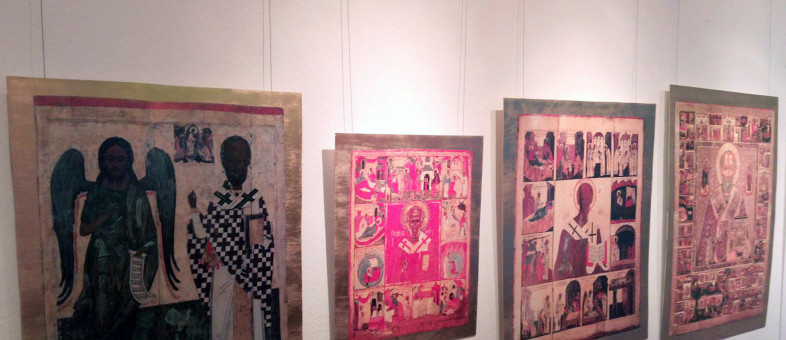Photos of icons and frescoes from Kirillo-Belozersky Museum-Reserve and Museum of Dionisy’s Frescoes are exhibited in Germany
November 17, 2016
This exhibition was first staged in the National Museum of Liechtenstein in Vaduz in 2014 within the framework of the official events marking the 20th anniversary of the establishment of diplomatic relations between Russia and Liechtenstein.
Close cooperation of the National Museum of Liechtenstein and the Kirillo-Belozersky Museum-Reserve began in 2014 when Rainer Vollkommer, director of the National Museum of Liechtenstein, came to Kirillov and Ferapontovo. During the visit, they agreed on the participation of the Kirillo-Belozersky Museum-Reserve in the project about St. Nicholas.
Later the Kirillo-Belozersky Museum-Reserve and its branch - the Museum of Dionisy’s Frescoes - gave four photographs of the icons painted in the 15th-16th centuries and a photo of the fresco in the Nativity of the Virgin Cathedral to the National Museum of Liechtenstein.
Icon of St. Nicholas from the Deesis tier of the iconostasis of the Nativity of the Virgin Cathedral in the Ferapontov Monastery, about 1490.

Icon of St. Nicholas from the iconostasis of the Dormition Cathedral in the Kirillo-Belozersky Monastery, Kirillov, about 1497.

Icon of St. Nicholas of Zaraisk from the iconostasis of the Transfiguration Church in the Kirillo-Belozersky Monastery, Kirillov, about 1595.

Processional Icon of St. Nicholas from the Church of the Deposition of the Virgin’s Robe in the Ferapontov Monastery, 16th century.

Fresco of St. Nicholas of Myra in the conch of the southern altar apse of the Nativity of the Virgin Cathedral in the Ferapontov Monastery. It was painted by Dionisy in 1502.

In 2014, the National Museum of Liechtenstein published the catalogue “St. Nicholas the Miracle-Worker. Life of St. Nicholas” in German and in the booklet “St. Nicholas – Mystery, Fiction, and Truth” in Russian and German. The photos of the icons of St. Nicholas from the holdings of the Kirillo-Belozersky Museum-Reserve and the Museum of Dionisy’s Frescoes were included in them.
Official name of the museum:
The Federal State Budgetary Institution of Culture “Kirillo-Belozersky Historical, Architectural and Art Museum-Reserve”
Founded:
In 1924
Museum status:
It was included into the State List of Particularly Valuable Objects of Cultural Heritage of the Peoples of the Russian Federation in 1997.

 найти на плане
найти на плане

